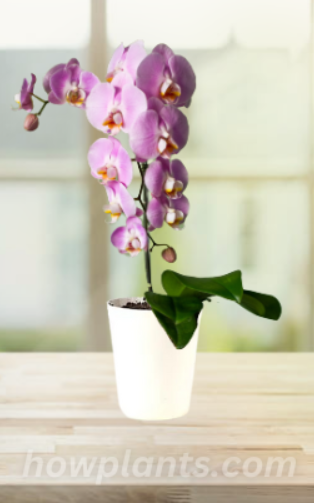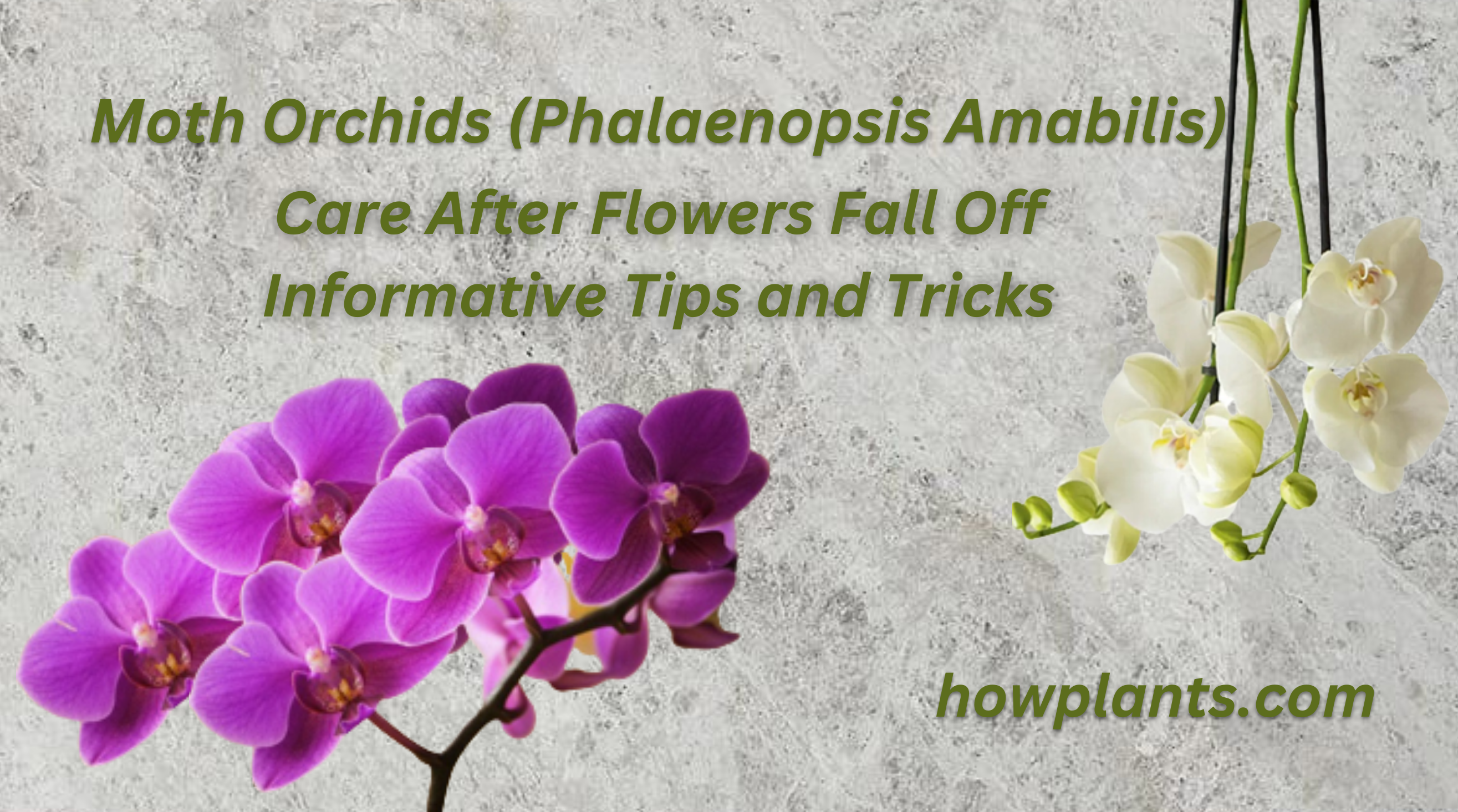Orchids are among the most beautiful and delicate flowers that adorn both homes and gardens. While they may look fragile, they are actually quite hardy if properly cared for. With only a few steps, you can trick your orchid into reblooming again and again.
Are you an orchid enthusiast frustrated by the fact that your beautiful little flower doesn’t seem to bloom on a regular basis and it has lost all its flowers? Orchids can be temperamental, but with some effort, you can get them to rebloom. In this article, we’ll discuss how to trick your orchid into reblooming by providing the right amount of light and water and implementing a few other tricks. You may need to invest some time and patience in order to get your orchid to rebloom, but the results will be worth it!
Phalaenopsis Flowers dropping off and Stems becoming brown
If you’re noticing the stems of your Moth Orchid turning brown and the flowers beginning to fall from the stem, it may be a sign that something is wrong with your plant.
If you are seeing discoloration on your orchid stems, this can be an indication of improper watering. Too much water can cause root rot, leading to brown spots on the stems. This can affect the healthy functioning of the plant and eventually cause flower buds to drop off due to lack of nourishment from the roots. On the other hand, not enough water will cause dryness in its leaves and petals which could lead to premature dropping as well.

Moth Orchids Blooming
These flowers have a unique life cycle and blooming process. Phalaenopsis Orchid flowering begins with the sprouting of a new shoot which will eventually develop into an inflorescence consisting of multiple flowers. After several weeks of growth, buds appear at the base of each stem and slowly open up as time passes. These blossoms are usually white in color but can sometimes come in various shades depending on its variety.

How eventually Orchids Bloom?
To understand the life cycle of this gorgeous flower, you must first know how eventually the Phalaenopsis orchid blooms. The process begins with proper care and maintenance of the plant. These flowers require periods of rest and darkness in order to bloom properly, so ensuring that they are exposed to 12 hours of light each day is essential for their development.
Additionally, temperatures between 60-90 degrees Fahrenheit will promote healthy growth and budding. With adequate sunlight and warmth, the plant’s buds should begin to emerge after approximately 8 weeks from planting time.
How long do Amabilis Orchids take to Rebloom?
These flowers have the potential to bloom multiple times, but how much time does it take for them to rebloom?
The answer depends on many factors such as light quality and quantity, temperature, water, humidity and fertilizer. Generally speaking, an orchid can take anywhere from two months up to a year after its last bloom before flowering again. For Phalaenopsis orchids in particular, it’s best to wait for about four months before removing the old flower spike so that it has enough time to recharge and prepare for another bloom cycle.
Why do the Orchid Flowers fall down?
When the flowers of Phalaenopsis orchids fall down, it can be concerning for many gardeners.
The most common reason why flowers drop from phalaenopsis orchids is because they are not getting enough light. This type of plant requires bright indirect sunlight to thrive, so if you notice your plants starting to lose their blooms, make sure you increase their exposure to light immediately.
Where Energy of Phalaenopsis Amabilis is used when it is at rest phase?
When Moth Orchids are not producing flowers, they enter an inactive phase known as rest. Despite being in this state of dormancy, energy is still used to nourish and sustain the plant. During this time, energy is stored within the leaves and roots for future use.
It has been discovered that during the rest phase of a Phalaenopsis orchid, its main source of energy comes from carbohydrates stored in its leaves. The carbohydrates are produced through photosynthesis during active stages of growth and are then converted into sugar molecules which act as fuel for the plant’s processes such as respiration and metabolism. In addition to these starches, certain nutrients such as nitrogen may also be taken up by the roots for storage.
Furthermore, some Phalaenopsis species can also utilize light energy differently than when they are actively flowering.
What care Orchids need when Flowers fallen down?
However, when all of its flowers have fallen and the petals are lying on the ground, it can be difficult to know what care this delicate species needs.
The first step in understanding how to properly care for your orchid is to identify if it has finished flowering. If all of the petals have dropped off, then you should trim away any stems that held the flowers that are now brown and dead. To ensure successful reblooming, you will need to give your plant regular watering and fertilizing during active growth periods. Additionally, make sure to water less during this time as compared to when in full bloom, allowing the soil to dry out completely before adding more water. When watering, use lukewarm distilled water that has been allowed to sit for a few hours after it is boiled so any chlorine can evaporate into the air.
Additionally, provide your orchid with plenty of humidity, as this type of flower loves moist air with temperatures around 70°F (21°C).
Where to cut and how to prune Orchid Stem after flowers fall off?
When you grow Phalaenopsis orchids, it is important to know how and when to prune them after their flowers have dropped. Pruning the spikes and dead nodes off of your Phalaenopsis plants serves to keep your plants looking healthy and attractive. It also helps promote new growth that will ensure more blooms in the future.
Cutting off dead spikes and dying nodes should be done as soon as the flower has died. Start by cutting off any dry, brown parts of the spike just below where it joins the node using a pair of sharp scissors or pruners. Make sure you are careful not to damage any other parts of your plant while cutting away these dead pieces. Once they have been cut away, inspect each node carefully for a new shoot emerging from within.
Do Orchids Rebloom after they die?
As any gardener knows, plants can be fickle and fragile. It can feel like an immense disappointment when a seemingly healthy plant suddenly begins to wilt and die. But before completely giving up on the plant, there are certain tell-tale signs that will indicate whether the plant is dead or not.
The first sign to look for is wilting leaves which indicates that the leaves are not getting enough water from the roots due to lack of nutrients in the soil or because of disease/insect infestation. If this is not addressed quickly, then it’s likely that most of or all of its leaves may eventually turn yellowish brown and fall off.
Sunlight Requirements of Phalaenopsis in resting phase?
If you’re a fan of Phalaenopsis orchids, it’s important to understand their sunlight requirements during the resting phase. This is especially important when the days become shorter in winter and the natural light levels decrease. During this time, it can be difficult to ensure that your Phalaenopsis orchid gets enough light for optimum growth.
When in the resting phase, these orchids need a balance of bright, indirect light and shade. Ideally, they should receive about 2-4 hours of direct morning sun each day with filtered afternoon sun for a few more hours. This is considered full-light exposure for Phalaenopsis orchids in this stage and will help them have healthy blooms once they move out of their dormant period.

Where to place Phalaenopsis Orchids Plant in house in its resting phase?
For optimal growth, choose a spot in your house that receives bright, indirect light. This could be near an east-facing window or within 3 feet of a west-facing window. Avoid placing it in direct sunlight as this may scorch the leaves and cause them to drop off. Additionally, make sure the room temperature stays between 65 – 75 degrees Fahrenheit during the day and between 60 – 65 degrees Fahrenheit at night for best results.
Care of Orchids during resting phase so that they rebloom within 2-3 months
There is an art to getting your Phalaenopsis orchid to rebloom within two to three months after its petals have fallen off. Follow these simple steps and you’ll be enjoying beautiful blooms once again in no time!
First of all, provide your Phalaenopsis with plenty of light and humidity – both of which will encourage reblooming. Place it near a window that receives bright but indirect sunlight for best results; make sure it never gets too much direct sun as this can cause burning. Additionally, try misting the leaves with water a few times a day to keep them deliciously hydrated.
Temperature Required by Phalaenopsis Orchids to rebloom?
Ideal temperatures are essential to keeping a Phalaenopsis orchid healthy and blooming. These beautiful flowers, native to Southeast Asia, thrive in warm climates with temperatures ranging from 72-80 degrees Fahrenheit during the day and 60-65 degrees Fahrenheit at night. This cool down period is essential for the orchid’s ability to rebloom, as it helps stimulate flowering hormones within the plant. In order to keep your Phalaenopsis blooming all year round, providing an ideal temperature that ranges between 65-75 degrees Fahrenheit is key.
In addition to maintaining a comfortable temperature range for your orchids, you should also be aware of any sudden drops or changes in temperature. A drastic change can cause shock and damage to both the roots and foliage of your plant.
Water Requirement of Amabilis Orchids to rebloom?
Watering is best done by submerging the plant’s pot in a container filled with tepid tap water twice a week during its active growth period, spring and summer. During this time, fertilize every other week with an orchid-specific fertilizer diluted to half strength for optimal results. In winter and fall, reduce watering significantly; once every two weeks should be sufficient during this dormant period.
Amount and Type of fertilizer Moth Orchids required to Rebloom?
When it comes to providing your Phalaenopsis orchids with the nutrients they need to rebloom, fertilizer is key. In order to ensure your plants are receiving enough of the right elements, you’ll need to know how much and what kind of fertilizer they require.
When fertilizing your orchids, use a balanced 20-20-20 formula applied at a rate of one teaspoon per gallon of water approximately every two weeks. This will provide the necessary nutrients for healthy blooms and growth. Additionally, be sure to keep an eye on the pH level in your soil; Phalaenopsis thrive best in acidic environments between 5.0 and 6.5 on the pH scale.
Summary
In the world of indoor plants, Phalaenopsis orchids are some of the most popular options. These beautiful blooms bring life to any room. Unfortunately, these blooms don’t last forever but they require a particular set of conditions in order to rebloom. You can make your orchids rebloom again by taking care of it by providing optimum temperature, giving proper light and shade hours and fulfilling its water requirements.
